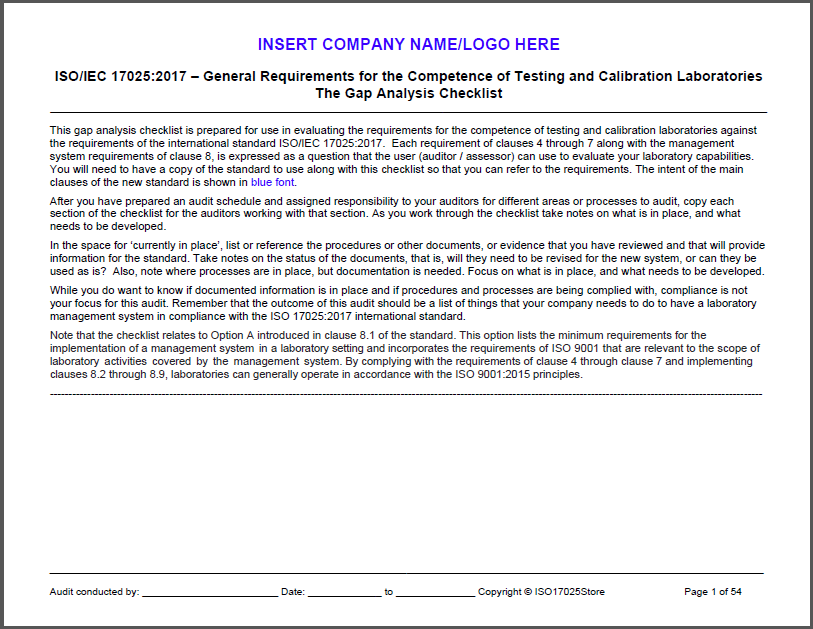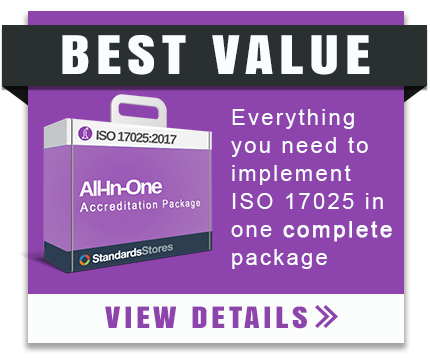This gap analysis checklist is best suited for organizations who are seeking initial accreditation to the ISO standard.
The checklist is a very useful tool for use in evaluating the requirements for competence of testing and calibration laboratories against the requirements of the ISO 17025:2017 standard.
Each requirement of clauses 4 through 7 along with the management system requirements of clause 8, is expressed as a question that the user (auditor / assessor) can use to evaluate your laboratory capabilities. You will need to have a copy of the ISO 17025 standard to use along with this checklist so that you can refer to the requirements. The intent of the main clauses of the new standard is shown in blue font.
- You know where you are (Current Laboratory Management System).
- You want to be ISO 17025:2017 Compliant.
- The difference between these is your gap. Anytime they differ you need to change your processes to bridge the gap.
The Gap Analysis Checklist will:
- Provide the tools and checklist you need to conduct your Gap Analysis.
- Provide a detailed checklist to use to compare your current systems to the requirements of ISO 17025:2017.
- Help you identify the requirements that your organization is already meeting, and those that need to be addressed.
- Give you the information you need to determine resources and a timeline for your project.
When traveling to unknown areas, a map is a necessity. Likewise, a Gap Analysis will provide you with valuable information to help you plan your Implementation Project. Our Checklist will give you the information you need to bridge the Gap.
- Includes Technical Support
- 54 page Gap Analysis Checklist
Compare Products
Which version is right for me?
If you are transitioning from ISO 17025:2005 to ISO 17025:2017, the Gap Transition Checklist provides you a map of where to copy some text from your existing LMS, and place it in a new LMS structure.
If you are adding ISO 17025:2017 to ISO 9001:2015 structure, the ISO 9001:2015 to ISO 17025:2017 Gap Checklist highlights the differences with ISO 9001:2015 requirements and ISO 17025:2017.




